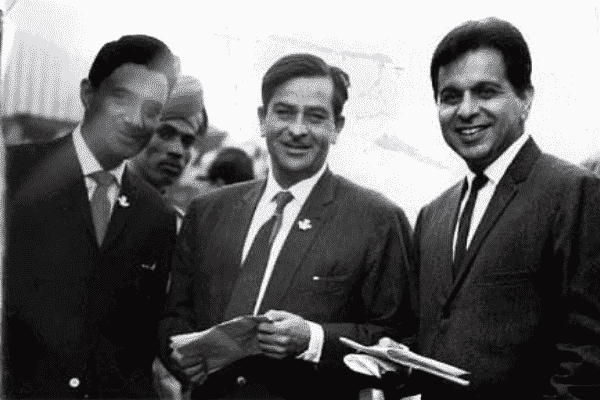With the passing of the legendary actor Mohammed Yusuf Khan – who ruled hearts as Dilip Kumar – the original ‘Punjabi Troika’ of the Indian film industry has now passed into oblivion.
The trio – Dilip Kumar, Dev Anand and Raj Kapoor – all unmatched maestros in their art – symbolized what is regarded as the ‘Golden Era’ of the Hindi film industry.
Hailing from Punjab in undivided India, they opted for a career in the then-fledgling Indian film industry of distant Bombay (now, Mumbai), and excelled, often par excellence.
In the strange, menacing, unforgiving, big, bad city of Bombay, another legend Dhundiraj Govind Phalke, revered now as ‘Dadasaheb Phalke’, had sowed the first seeds of film making at a building in Dadar, 1912.
It was to this ‘Mayanagri’ that many dreamy-eyed youngsters descended from all over, and continue to do so till date – for their ‘tryst with filmy destiny’.
Many trooped here harbouring ambitions to become heroes, heroines, villains, vamps, directors, producers, cameramen, singers, dancers, music directors, or one of the many departments of film-making.
Peshawar neighbourhood friends Dilip Kumar (b. 1922) and Raj Kapoor (b. 1924) also came here, and then Dev Anand (b. 1923) from Gurdaspur followed suit. All three overcame huge hurdles before getting a toehold in the magical world of celluloid – splashing their own ‘Punjabi tadka’ to Bollywood potboilers.
Raj Kapoor started as a child star and then broke into the big league with Neelkamal (1947), Dilip Kumar launched with Jwar Bhata (1944), and Dev Anand in Hum Ek Hain (1946) – all after the great Phalke had departed from the scene.
After the initial hiccups, there was no looking back for the ‘Troika’ and generations around the country looked up to it for whipping up a feast of wholesome, memorable, musical entertainment.
Between the 1950-1970s, they lorded over the film industry with their ‘larger-than-life’ images, distinct personalities, characters they enacted, unique styles and mannerisms, and their onscreen or even off-screen chemistry with many of the dream-girls of that era who rotated with them in different films.
Though they remained professional rivals, they were great pals full of camaraderie in their private lives, unknown to the masses.
Each of them became immortal with their signature performances – Raj Kapoor (Awara 1951), Dilip Kumar (Mughal-e-Azam 1960) and Dev Anand (Guide 1965) – though the trio has left behind a treasure chest of hundreds of other great films.
Surprisingly, Dilip Kumar worked with both Raj Kapoor (Andaz 1949) and Dev Anand (Insaniyat 1955), though never did the trio feature in any film jointly.
Subsequently, there were others who carved a niche for themselves like Ashok Kumar, Manoj Kumar, Rajendra Kumar, Raaj Kumar, Balraj Sahni, Jeetendra Kapoor, Amitabh Bachchan, Dharmendra Deol, Vinod Khanna, Shatrughan Sinha, and more recently the Shah Rukh Khan, Aamir Khan, Salman Khan, Saif Ali Khan and many more.
Nevertheless, the glowing legacy of Dilip Kumar (98), Dev Anand (88) and Raj Kapoor (63) will continue to inspire many generations of actors and filmmakers for centuries to come.
IANS
READ ALSO: Dilip Kumar: Bollywood’s Tragedy King
Link up with us!
Indian Link News website: Save our website as a bookmark
Indian Link E-Newsletter: Subscribe to our weekly e-newsletter
Indian Link Newspaper: Click here to read our e-paper
Indian Link app: Download our app from Apple’s App Store or Google Play and subscribe to the alerts
Facebook: facebook.com/IndianLinkAustralia
Twitter: @indian_link
Instagram: @indianlink
LinkedIn: linkedin.com/IndianLinkMediaGroup



